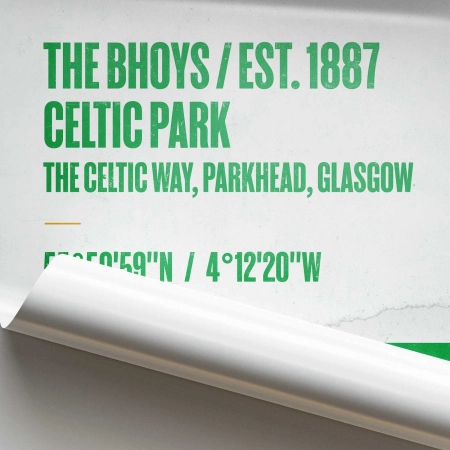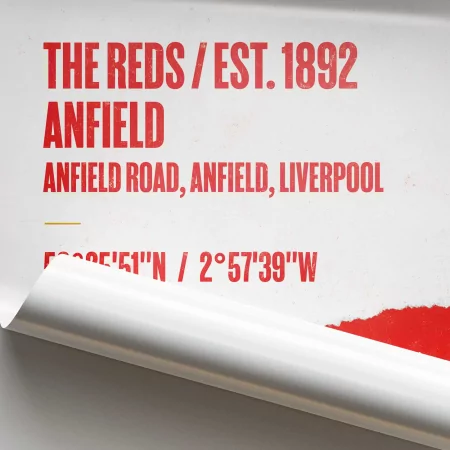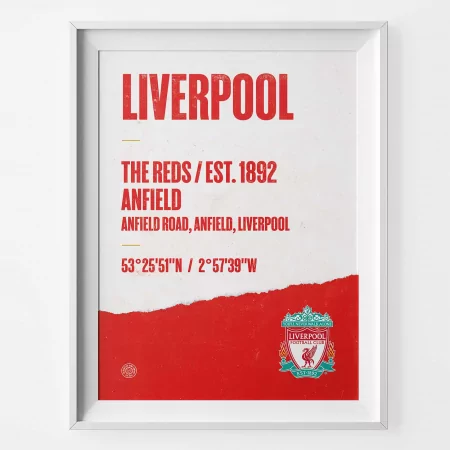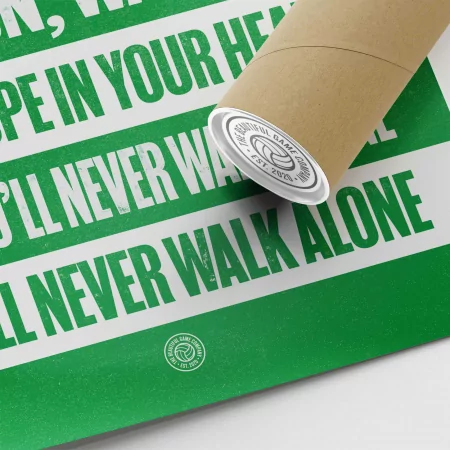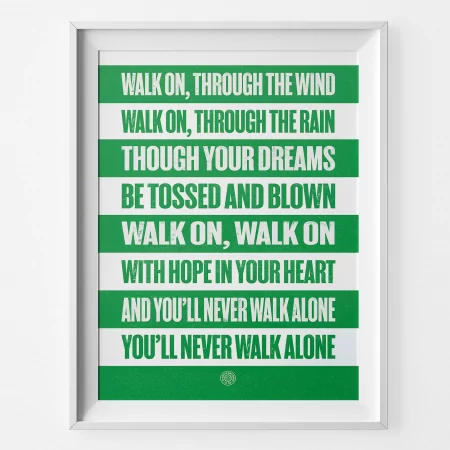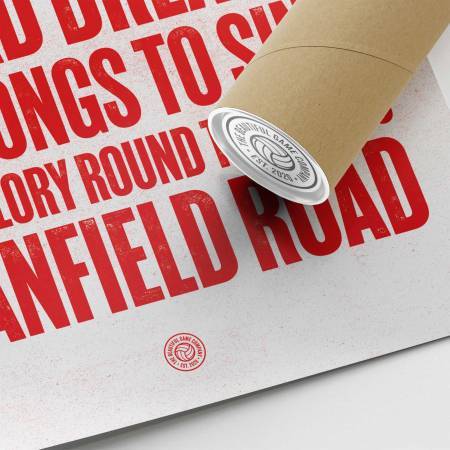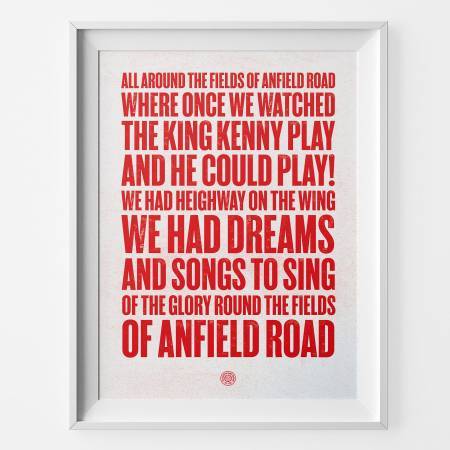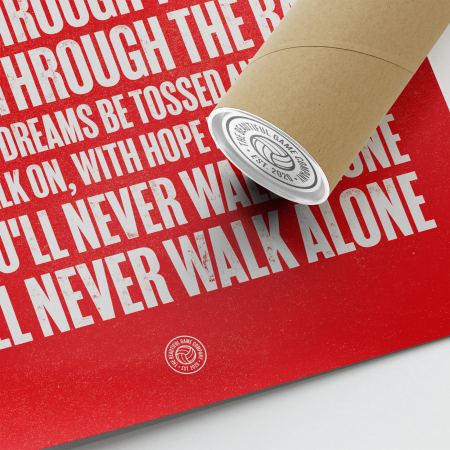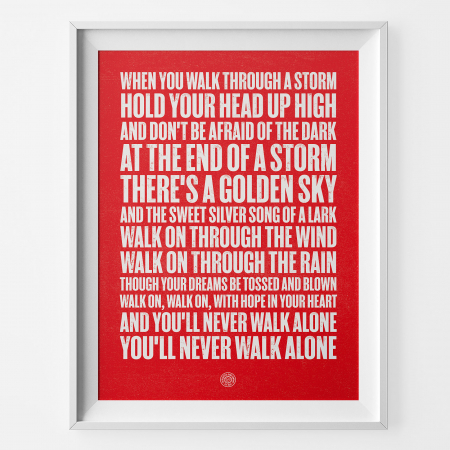It’s one of the most famous football anthems in the world, adopted by more than one club, but who sung it first?
“When you walk, through a storm, hold your head up high, and don’t be afraid of the dark…”
Spine-tingling lyrics can make the hair stand up on the back of the neck, and arouse a sense of pride and belonging. Just ask any supporter of Liverpool FC who has more than likely sung it in full throng, scarf defiantly aloft, before every home match. Whether on the Kop at Anfield, at a rival English ground, or further afield on a European trip, the feeling is just as strong for those that bleed this particular hue of red. Even watching on television or listening to the radio can somehow move the soul of a true fan.
You’ll Never Walk Alone is associated with Liverpool but other clubs have adopted it. At Celtic Park, thousands of home fans roar out a deafening version of YNWA as the teams took to the pitch. The two cities, Liverpool and Glasgow and the two clubs are closely linked and share a fraternal relationship. No one is sure how, when or where the bond between Liverpool and Celtic started – since the 1980s, it has been a common sight to see a few supporters wearing a green and white Celtic scarf, a half and half scarf or hat during home games at Anfield. The two clubs became practically inextricably linked in August 1977 when Kenny Dalglish signed for the recently-crowned European champions. For many, Dalglish is still regarded as the best player to have ever donned a Liverpool shirt.
So Liverpool fans have no problem with Celtic adopting their anthem. At Anfield and Parkhead, the pre-match rituals are actually different – while the Liverpool team take to the pitch to YNWA, Celtic take to the pitch to The Celtic Song – YNWA is reserved for European nights. It is believed that Celtic supporters first started singing You’ll Never Walk Alone after a European Cup Winners’ Cup semi-final tie against Liverpool on 19 April 1966. There was solid wall of green and white at the Anfield Road end with reports that a handful of travelling supporters dared to make their to the Kop with a banner – and were allowed to stay.
Curiously, Liverpool won the tie 2-1 and booked their place in their first European final where they would meet Borussia Dortmund – the only other club that has adopted You’ll Never Walk Alone in the mid-90s.
When was You’ll Never Walk Alone written?
It is, as hopefully you’ll have assumed from the title of this article, the opening line to the song, You’ll Never Walk Alone, which was written back in 1945 for the Rodgers and Hammerstein musical Carousel, the film released in 1956. For any younger fan that has never heard this original version, there is rather a striking difference to the one now sung on the terraces, in the streets and bars where the Reds’ faithful congregate.
The purpose of this powerful and emotional song in the musical is for one friend to comfort another for the loss of a loved one. Julie Jordan, the main character, is dealing with the death of her husband Billy Bigelow, and the words, sung to her by cousin Nettie Fowler, are seen to sooth her pain, made all the worse as she’d never told him that she loved him. In the scene above you can see how Jordan attempts to sing it herself as a sign of strength but is unable to continue, hence Fowler’s intervention. It’s later reprised as a song of encouragement for a class of graduates.
How did You’ll Never Walk Alone become part of Liverpool FC?
So, how does a Broadway musical hit arrive at an English football ground? It just so happens that a very young Gerry Marsden saw the film and really enjoyed the song. His band Gerry and the Pacemakers started performing it at the Cavern and in 1963 recorded their own cover version – their third single on Columbia. It was instantly taken up by the Kop, belted out by 25,000 fans on the famous terrace. The Kop sang all of the chart hits of the day, but YNWA resonated more than the rest. Gerry Marsden’s version is now played out over the tannoys at Anfield before every home game, slowly building before the record is faded out leaving the crowd signing a cappella.
What are the lyrics to You’ll Never Walk Alone?
When you walk through a storm, hold your head up high
And don’t be afraid of the dark
At the end of a storm, there’s a golden sky
And the sweet silver song of a lark
Walk on through the wind, walk on through the rain
Though your dreams be tossed and blown
Walk on, walk on, with hope in your heart
And you’ll never walk alone, you’ll never walk alone
Walk on, walk on, with hope in your heart
And you’ll never walk alone, you’ll never walk alone

